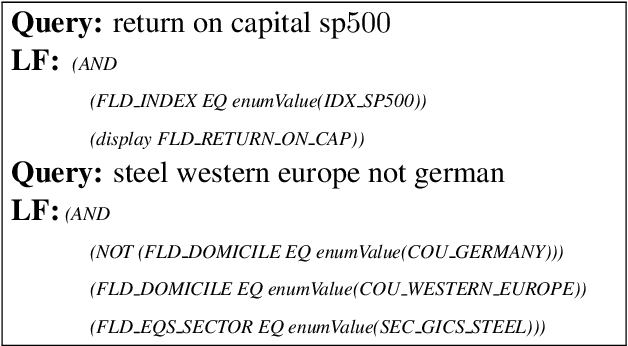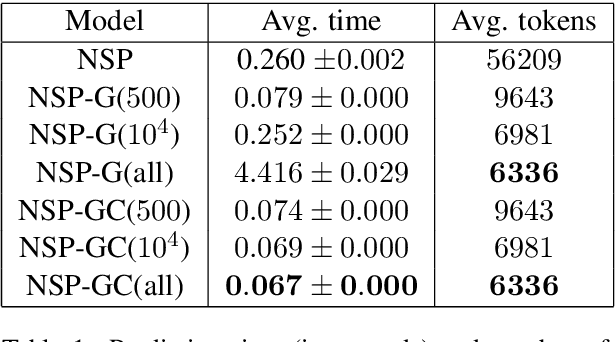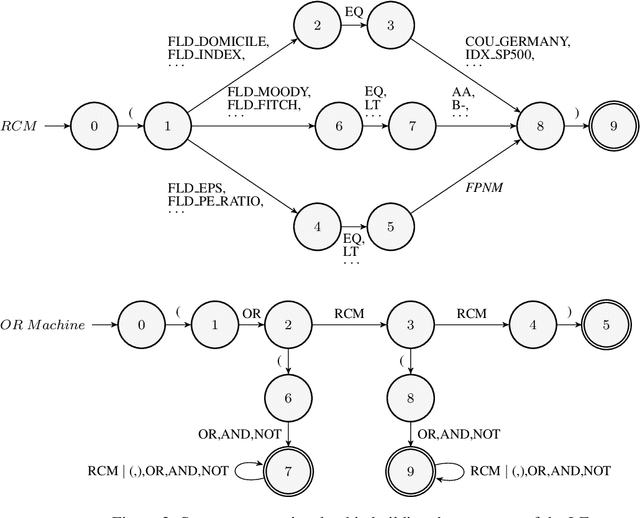Grammatical Sequence Prediction for Real-Time Neural Semantic Parsing
Paper and Code
Jul 25, 2019



While sequence-to-sequence (seq2seq) models achieve state-of-the-art performance in many natural language processing tasks, they can be too slow for real-time applications. One performance bottleneck is predicting the most likely next token over a large vocabulary; methods to circumvent this bottleneck are a current research topic. We focus specifically on using seq2seq models for semantic parsing, where we observe that grammars often exist which specify valid formal representations of utterance semantics. By developing a generic approach for restricting the predictions of a seq2seq model to grammatically permissible continuations, we arrive at a widely applicable technique for speeding up semantic parsing. The technique leads to a 74% speed-up on an in-house dataset with a large vocabulary, compared to the same neural model without grammatical restrictions.
 Add to Chrome
Add to Chrome Add to Firefox
Add to Firefox Add to Edge
Add to Edge